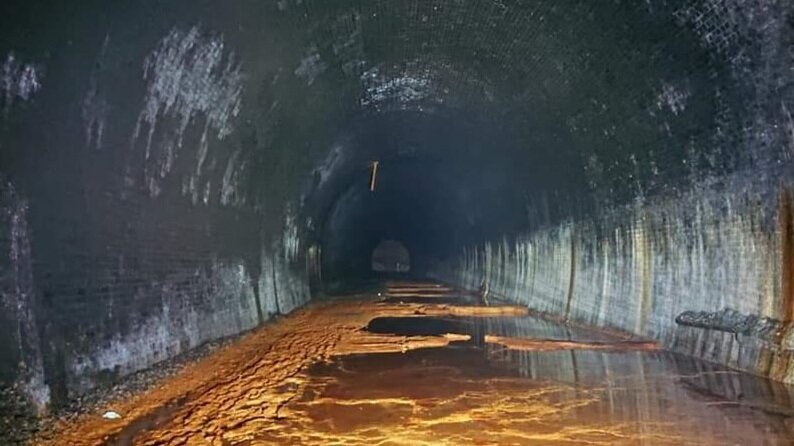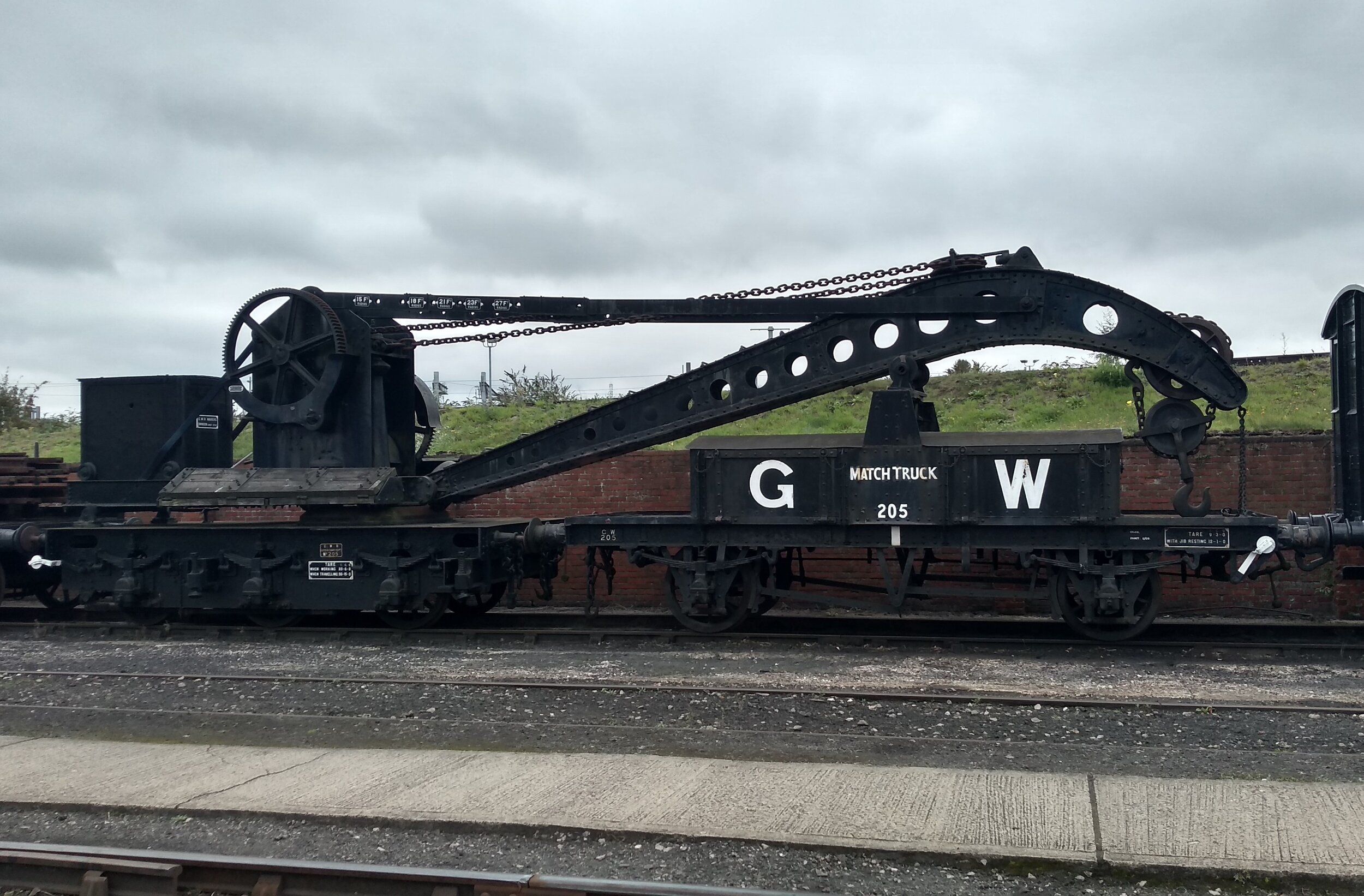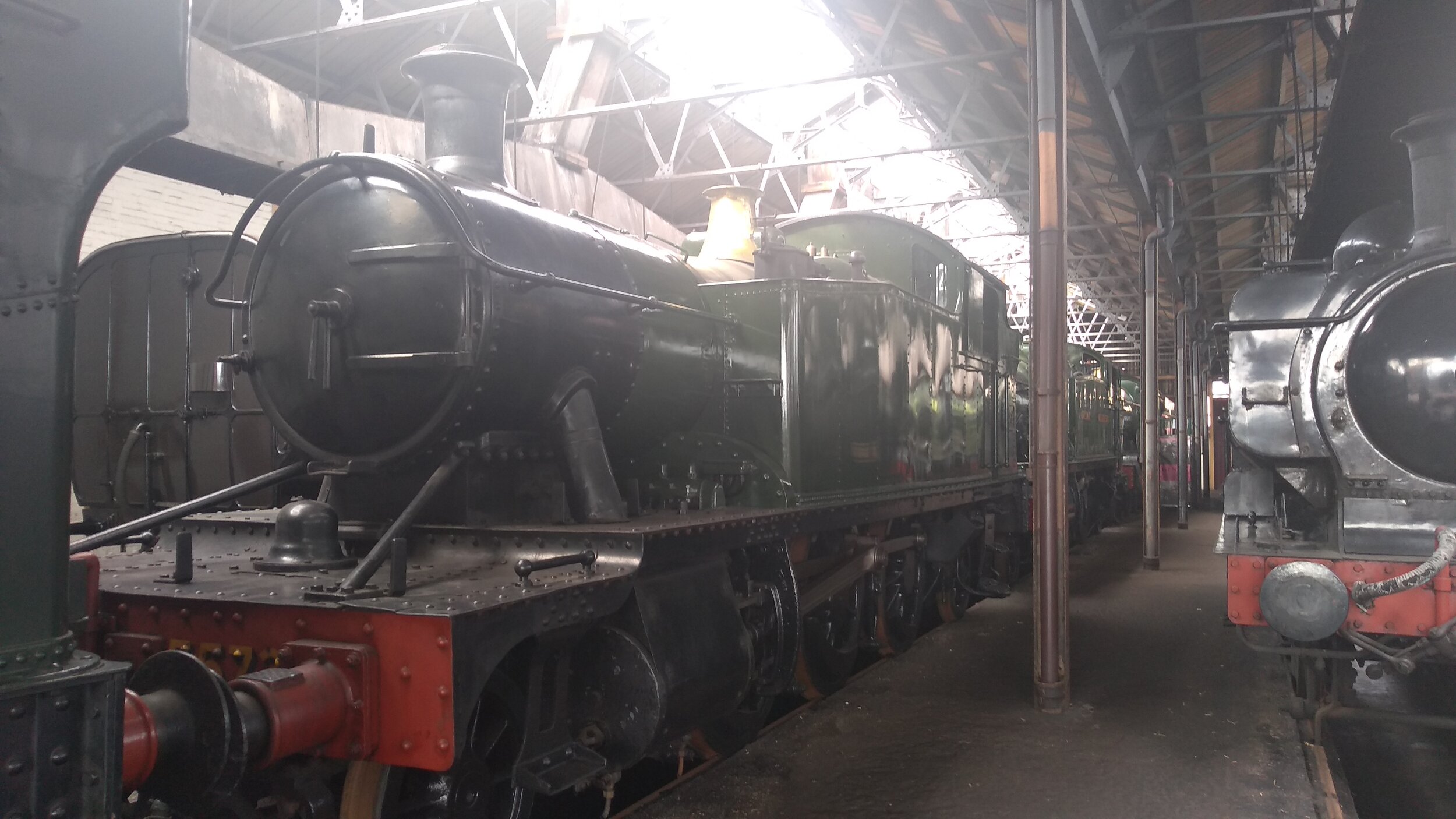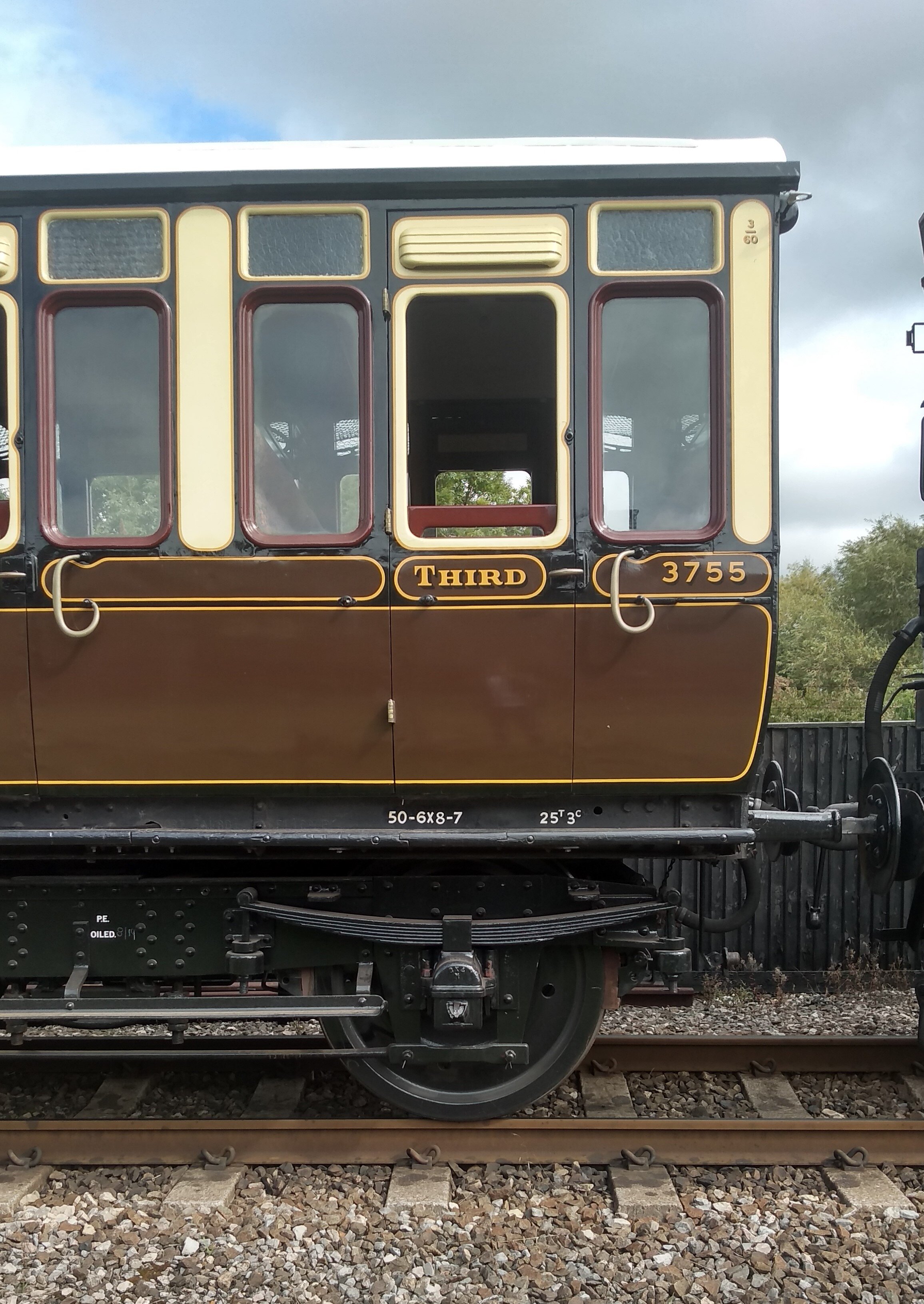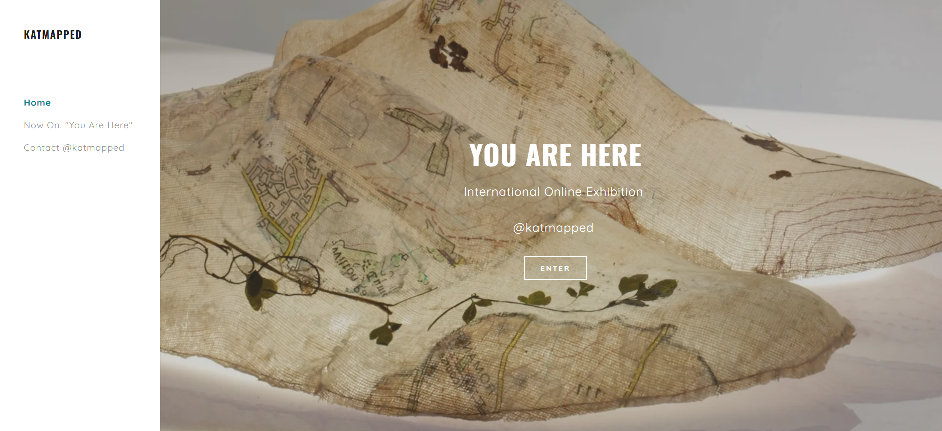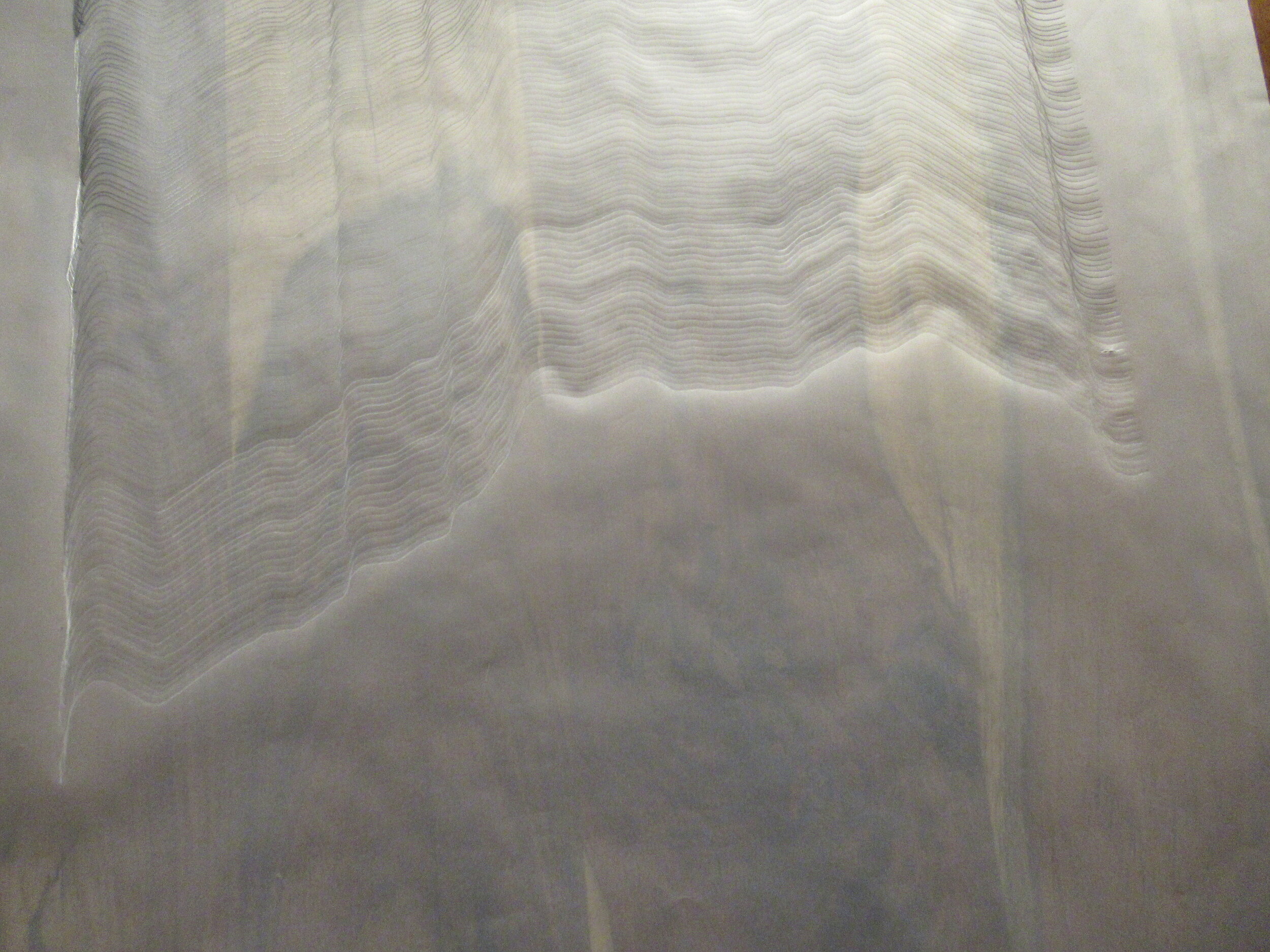The following is a transcript of that talk:
“Good evening everybody, I’m really delighted and grateful to be here tonight with Anita and Peter. Thank you for inviting me, Anita.
I am speaking to you from my studio at the end of my garden in Oxford, but I’d like to invite you to join me on an exploration of the wonderful island of Anglesey, a place rich with history, full of the remnants of past ages, fascinating landscapes (natural and manmade) and in particular an old railway line running 17 and a half miles from Gaerwen in the south, up through the middle of the island to the small harbour town of Amlwch on the north coast.
I first encountered the line, during a family holiday to Anglesey in 2018, and since then it has exerted a powerful fascination for me, to the point that it became the subject of my recently completed MFA in Fine Art at Oxford Brookes University. Exploration of landscape and industrial history is one of a number of personal interests that I have drawn into my art practise. I also find myself drawn to islands, too. I think it’s to do with that sense of marginality, escape and distancing from the centre; and I enjoy finding stories that are untold or overlooked, perhaps hiding in plain sight.
A little bit of history may be helpful to start with.
The line opened in the 1860s. It lost its passenger services during the “Beeching Cuts” of the 1960s, but freight trains continued to run up until 1992. Since then, it has fallen into disuse, but the tracks and infrastructure remain substantially in place, albeit subject to the passage of time and progressive reclamation by nature. A group of volunteers is now working to clear the line with a view to restoring it to use, advocating for its restoration as part of the current national debate about reopening old railway lines. It is a vibrant, sometimes fractious, debate. The line stands at a crossroads, or perhaps I should say a junction, right now because it has several different potential futures as well as a real sense of history to it.
So whilst on that family holiday in 2018, I was very intrigued see this old line meandering around the contours, settlements and lakes of Anglesey on maps at first, and then glimpsed on the landscape through trees and many weeds. I was struck by this idea that a map is just a snapshot or a representation of a place at a given moment in time. Maps don’t set out to record every quality of a place, its atmosphere or history, or the ways in which places change over time - that is not their purpose - so I started to think about the railway line as existing in time too. It is, or was at the time of the drawing, 156 years old.
I started to think about the railway line as a drawing on a landscape and in time too. But I was always aware, from the very beginning, that my subject was an elusive one. Maps helped me to think about the obvious, literal quality of being a line that is inherent in a railway line , including on a map, and so it seemed to me that a drawing was the perfect way to think further about this. I also wanted to think about the qualities of time, decay and endurance that I saw as important aspects of the place.
And really that is where the idea for “Timelines” originated.
It was completed in late 2019 and was one of my very first responses to the railway line. I made this drawing at home 200 miles away from Anglesey but this didn’t seem a problem to me because I was really thinking about those aspects of the line that are unseen and intangible.
To make the drawing, I had the idea to use the line’s mapped shape as a sort of motif and to use one line to represent one year in the life of the line from the beginnings of its construction in 1864 through to the present day. There is a strand in my work of the encoding and preserving of information, especially marginal information or information that is at risk of being lost or forgotten. I established a process for that too, a schematic plan on a spreadsheet so I could consistently and progressively move from softer to harder grades of pencil so that I could make the line become fainter as I worked left to right across the paper, to evoke a sense of a narrative of fading away or forgetting that is very apparent in the condition of the line today. I worked steadily ticking each line off on my plan as I went. And when I reached the line for the year 1992, when the trains stopped running, I swapped from a graphite pencil to a plastic stylus, so that I was making an even fainter mark; a trace, if you like, or a register of falling into stillness or silence, perhaps.
I should say also that the drawing is on tracing paper, which I chose for several reasons. Firstly, there was the purely practical reason that it allowed me to trace the line from the OS map. There is also something quite mundane or “low-status” about tracing paper. I felt that worked quite well for this rather unglamorous, overlooked railway line. But more than that, I really enjoy the way tracing paper responds to the pressure of a pencil tip by recording a clear indentation. It also has that quality of translucence, that captures or reflects light, in a different way to standard papers. This helps makes the multiple lines of this drawing create a visible sense of contour so that they appear to coalesce into their own sort of imagined landscape. Perhaps partly because we all recognise the convention of contour lines from maps, the eye reads the drawing as a having a topography of its own.
Following on from this idea of topography and space, one of the reasons that drawing is so important in my practise is that it opens up a space for thinking, and I think that is true for many drawing artists. The drawing took about four hours so I had plenty of time for reflection as I worked. Thinking and making seem to go hand in hand when I’m drawing, and this was particularly the case for me with “Timelines”. The following are some examples of the thoughts that occurred to me as I worked:
The idea of systems, regularity and repetition that is typical of a railway line – trains going along the line, tracing and retracing the fixed route of the railway lines. The process of creating this drawing became, I found, a way of enacting something similar by making my own journeys down the line, as a train would, and really helped connect me to it.
This enabled me to connect to the idea of memory in the drawing – memory of the line and also the memory of my mark-making itself.
This lead me to thinking about lines are recoding something: grooves on a record, or growth lines in stump of a felled tree, or sound waves which are of course other ways of storing and preserving information. So I found a sense of reverberation, resonance or echoes in the drawing, that made me think more about how the line was perhaps less silent and more resonant than I had first thought. (They could be geological or seismic movements, too – Anglesey is geologically very significant but that’s another story).
Thanks in large part to “Timelines”, all of these things were aspects of the railway line that I went on to explore in other work in the following year or more. I wasn’t consciously planning for these outcomes, but I discovered them in the process of thinking and making put together in the creation of this drawing. (I am a fan of the work of the anthropologist Tim Ingold, who writes very powerfully in this area, as well as on the subject of lines.)
But I think the drawing also enabled me to connect deeply with what I saw as the qualities of this place that I was exploring – not, here, in the sense of a visual representation of what the railway looks like, (though I have done that in other work) but in a way that connected with my reaction to its intangible, felt and unseen qualities. And when I was able to physically be near or on the line (which of course turned out to be much harder to achieve in 2020 than I expected) I felt able to connect to the railway through the thinking I had done in “Timelines”. And importantly, the line had opened out, if you like, leaving the map and acquiring a real and rich sense of place, resonance and interest.
If you are interested in finding out a little bit more about my work in response to the Amlwch railway line, please visit my website which is www.markrclay.co.uk There is a gallery there of a my wider body of work including this other drawings but I have also written quite extensively on aspects of the railway line, and my exploration of it, in the blog that is also on the site.
Thank you very much for listening.

